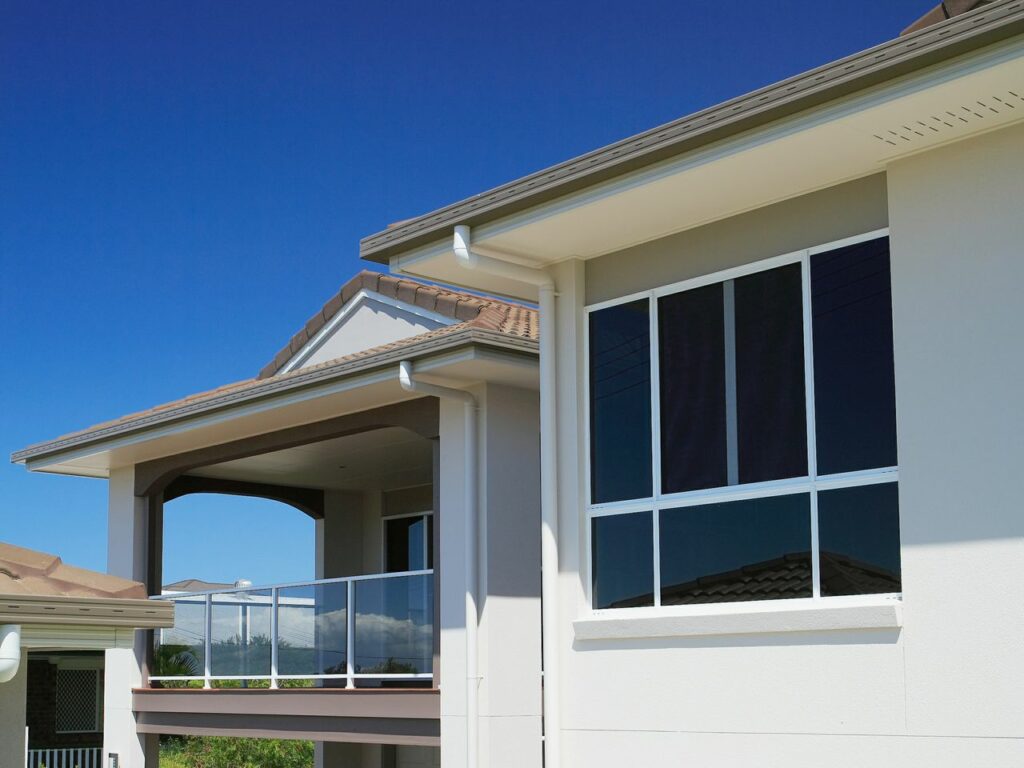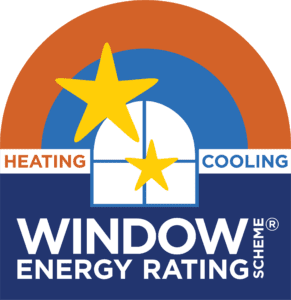When installing new aluminium doors and windows, there are a few important things to consider, especially if you need to remove older windows before installing your new ones….

How to Select the Right Type of Window Glass
Did you know that the type of glass you use in your windows and doors will affect not only how much light enters your home, but how hot your house will be throughout the day?
Different climates require different windows to save on energy costs, create a comfortable environment and provide natural light. Windows can be crafted to suit your home, by combining the right glass, glaze and production method.
Thermal & Solar Properties of Windows
All glass has thermal and solar properties. Glass will absorb, reflect or allow a certain percentage of the sun’s energy into the building. The Australian Fenestration Rating Council outlines three main calculations to rate a finished window’s performance. These are:
Solar Heat Gain Coefficient (SHGC) – Usually between 0 and 1, this indicates the percentage of the sun’s heat that will pass through and be absorbed by the window. The higher the SHGC, the more heat will enter the building.
Visible Light Transmission (VLT) –This represents the amount of natural sunlight provided.
U-Value – A “WATTS per m2 per degree” number, indicates the amount of heat gained or lost throughout the course of the day based. Usually, you want a window that has a lower u-value as it will be more energy efficient.
Different glass compositions and glazes change the above three calculations. The design of your home and the direction the window faces also have a significant impact. Hot climates usually require medium to high VLT with a small SHGC and low U-Value; cool climates require high VLT, high SHGC and low U-Value.
Types of Window Glass for Aluminium Windows & Doors
Listed here are the types of window glass and glazes used for aluminium windows and doors. Each glass and glaze will change the values of the above and suit a different climate or purpose.
1. Tempered Glass
Heating glass to 680°C and then quickly cooling it with air blown at both sides of the pane creates tempered glass. Four times stronger than regular glass, it breaks into small, blunt fragments if it breaks at all. It is commonly used for patio doors, and windows near bathtubs and showers; without a glaze, it will most likely have the same SHGC, VLT and U-Value as plain, untreated glass.
2. Coloured
A beautiful way to accent your home coloured or tinted glass is treated with pigments of colour during production to give it a vibrant appearance. The colour pigments provide shade from the sun, reducing the SHGC of the windows. The colour of the glass also reduces the amount of VLT.
3. Obscure
More often called “frosted glass,” obscure glass looks like it is iced over all year long, usually with specific patterns. Obscure glass works affect the SHGC in the same way as coloured glass, reducing the amount of the sun’s heat that enters your home. It differs with regards to the VLT – this will be the same as with plain or tempered glass allowing lots of natural light into your home while also providing you with privacy.
4. Insulated
When two panes or sheets of glass are sealed together, separated by 0.5 to 1cm of dry air or gas, they are called insulated glass. The tiny gap significantly reduces the U-Value of a window, an also affects the SHGC. Much of the heat won’t pass the gap.
5. Laminated
Car windshields are a prominent example of laminated glass. A layer of polyvinyl butyral (PVB) is pressed between two panes of glass and the contraption is heated and pressed until all three sheets are one. When this glass breaks, the fragments stay bonded to the PVB; like tempered glass, laminated glass is primarily used for safety. The benefits include reduced noise levels – the three sheets block quite a bit – and a high UV ray block, protecting your furniture from sun bleaching.
6. Tinted Glaze
Like coloured glass, tinted glass reduces SHGC and VLT rating of your window. There are two types:
a. Heat-absorbing tint glazes absorb a large portion of the sun’s energy, reducing the amount of heat allowed through the glass and the glare from the sun. Grey and bronze tinted glass reduces both light and heat from entering through the glass.
b. Spectrally Selective tint glazes are usually blue or green. These have a high VLT while still lowering the SHGC. Black-tints are discouraged in hot climates since they significantly reduce the amount of natural light and absorb too much heat – this increases the thermal stress on the glass and causes it to break.
7. Low –Emissivity
Low-Emissivity glazes are a great way to save on energy costs year round and provide a comfortable interior. This glaze reduces the U-Value and SHGC of your window. It can also control how much heat is transferred into your home. There are three varieties – high solar gain, moderate solar gain and low solar gain. If you prefer a warmer environment, select high solar gain; or, if you prefer your interior to be cooler, select low solar gain.
8. Reflective
This metallic coating applied to the glass of a window pane creates a reflective surface. The sun’s rays bounce off the window and away from the interior, reducing the SHGC. The coating also produces a mirror like covering that prevents you from seeing through. Reflective glazes are commonly used in hot climates to control heat. However, the reduction in air conditioning is outweighed by the need for additional lighting, as the coating severely reduces the VLT.
Once you know the position the glass will take in your home and the amount of direct sunlight it will be exposed to, consider the normal weather patterns of your region. Then go through the above list and select the best combination of all the components. By considering the SHGC, U-Value and VLT of the window, you can personalize your home so that it will be the right temperature for you all year round.
Categories
- Aluminium Doors
- Aluminium Windows
- Bi-Fold Doors
- Causes We Support
- Contracts and Business
- Double Hung Windows
- Energy Efficiency
- Events / Trade Shows
- FAQ Series
- Hinged Doors
- Home Decor Tips
- Home Renovation
- Home Security
- Infographics
- Louvre Windows
- Other
- Outdoors
- Sliding Doors
- Sliding Windows
- Stacker Doors
- Trends
- Uncategorized
- WERS Rating Scheme






